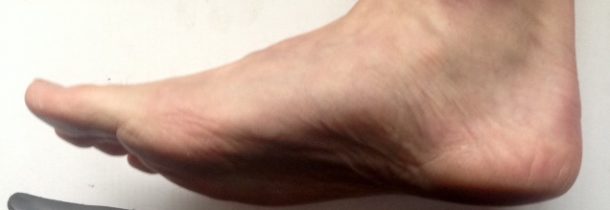Ankle Pain
The Ankle & Foot

The ankle is a complex joint and its function is intimately related to your foot mechanics and even your knee, hip and back. Your foot and ankle takes most of your weight, sometimes all of your weight as you walk/run from one foot to the next, and has intricate articulations between the 28 bones to allow for propulsion and smooth motion. The supportive network of ligaments and muscles allows for the diverse controlled movement.
The following list is by no means exhaustive but aims to cover and explain the most common disorders and problems we see in clinic. This area can also be assessed and treated by our podiatrists.
Ligament Sprains
The most common ligaments to sprain in the ankle are the Anterior Talo-Fibular Ligament (ATFL), Posterior Talo-Fibular Ligament (PTFL) and the CalcaneoFibular Ligament (CFL). These lie on the outside of the ankle. Is it most commonly caused in sport or poor footwear with or without unstable ground. Often referred to as ‘rolling your ankle’, it is medically known as an inversion sprain. The ligaments are designed to resist this type of movement to prevent further damage to surround tissues, however it has a limit.
Typical symptoms may include:
- Bruising
- Swelling
- Localised or diffuse pain around the outside of the ankle
- Tenderness/ Stiffness
- Inability to weight bear or walk
The severity of the sprain can be divided into 3 classes and will dictate treatment:
1. Ligament stretched but not torn. No instability
2. Ligament(s) are partially torn with moderate swelling; mild instability
3. Ligaments are completely ruptured with significant swelling and marked instability with possible associated fracture
Treatment plan: Every patient is unique and the approach will reflect this. Together we will discuss a course of action and treatment which best suits you. Common key areas to be addressed may include:
- Assess for fractures – these will need immediate referral to hospital for appropriate diagnosis and treatment
- POLICE1 – Not RICE
- Protection – may require strapping/bracing/casting to prevent further injury, reduce swelling but allow for movement
- Optimum Loading – initially for the first 48hrs after the injury, resting is recommended, but the rehabilitation process should start soon after with simple mobility and progressing to weight bearing exercises
- Ice, Compression & Elevation – this classic combination is still recommended to reduce swelling and improve recovery
- Analgesics? – NSAIDs or anti-inflammatories may not be recommended during the acute phase of the injury to allow for healing but after can help to reduce pain
- Manual therapy – mobilising of the ankle and foot to start the process of re-establishing normal movement for after initial injury
- Lymphatic drainage – reduce swelling by encouraging the normal flow of fluid away from the damaged area
- Nutrition – encourage water, anti-oxidant rich and protein rich food consumption and reduce alcohol and salty, processed foods
- Mobility and strengthening of the ankle and surrounding muscles (calf, peroneals and shin muscles) progressing to endurance rehabilitation for 4-6 weeks
1. Medscape, 2014. Should POLICE Replace RICE as the Ankle Therapy of Choice? Available at: http://www.medscape.com[Accessed 14/7/17]
Plantar Fasciitis/ Fasciopathy
The plantar fascia is part of the superficial connective tissue in the sole of the foot, attaching at the heel and into the underside of the toes. It acts as a shock absorber and supports the arches.
Overloading of the plantar fascia can cause pain in the sole of the foot, often near the heel, which can be due to irritation of its attachment to the bone or inflammation of the fascia. Spending a lot of time on your feet either from activity or occupation may attribute to the problem.
Typical symptoms may include:
- Localised heel pain may radiate into the sole of the foot
- Relieved by lying down
- Worse first thing in the morning when weight bearing (first steps)
- Aggravated by walking or running
Treatment plan: Every patient is unique and the approach will reflect this. Together, your podiatrists will discuss a course of action, collaborating with one another and provide treatment which best suits you. Common key areas to be addressed may include:
- Assessing footwear suitability by podiatrist
- Appropriate support suggested by podiatrist
- Gait analysis
- Foot and ankle mobility
- Suppleness – deep foot, calves and hamstring muscles need to be strong and flexible
- Exercise to improve calf and foot strength – increase tolerance to load with gradual strengthening exercises
- Progressive return to normal activity (e.g. running)
Nerve Impingement
Our nerves are the extensions of our brain and spinal cord and allow us to taste, smell, hear, speak, touch and control our movement. Nerves must travel through our anatomy to get to where they need to be, either through spaces in our skeletal system, or between ligaments, connective tissue and muscles. Our nerves have an ability to stretch and move, however these smaller spaces are sites where our nerves can get impinged which creates nerve-like symptoms.
Typical Symptoms of this depend on the nerve affected in the leg and/or foot but may include:
- Pins and needles/ tingling
- Numbness or reduced sensitivity
- Weakness
- Pain
There are multiple areas of potential nerve impingement in the back and leg which can create these symptoms (See: Intervertebral Disc, Nerve Impingement and Piriformis Syndrome). In the foot, there is a space called the Tarsal Tunnel which the tibial nerve passes through, if nerve impingement occurs here is it called Tarsal Tunnel Syndrome (The foot equivalent to Carpal Tunnel Syndrome). This causes the above symptoms in the sole of the foot.
Treatment plan: Every patient is unique and the approach will reflect this. Together you and your podiatrist will discuss a course of action, collaborating with one another and provide treatment which best suits you. Common key areas to be addressed may include:
- Assessing footwear suitability by podiatrist
- Appropriate support suggested by podiatrist
- Gait/biomechanics analysis
- Foot and ankle mobility
- Nerve mobility
- Strength, suppleness and stamina – the muscles around the ankle and foot
- Predisposing factors – spine, hip and knee function and mobility
Muscle/ Tendon Strains & Injuries
Muscle strains or ‘pulling a muscle’ is a common injury in sport and is usually caused by excessive, over-stretching, explosive movement after an ineffective or absent warm up. Effectively, the muscle was not ready for the exercise put upon it. This can cause microscopic to significant tears in the muscle or tendon or anywhere in between. The most common areas to ‘pull a muscle’ are the hamstrings, quadriceps, groin, calf and back. Achilles Tendonitis/tendinopathy may also be associated with calf strains and would need further attention.
Muscle pain is called myalgia and can be consequence of a muscle strain or tear where there is physical or structural change to the muscle. Myalgia can also occur from a functional problem i.e. delayed-onset muscle soreness (DOMS), fatigue-induced (getting tired from being in one posture for too long) or a neuromuscular problem such as nerve impingement in the spine or dysfunction nervous control1.
Typical Symptoms may include (will depend on the specific type of muscle injury):
- Aching muscle firmness
- Can provoke pain at rest
- Worsening with activity
- Sudden pain, pain at rest hours after activity
- Reduced mobility of adjacent joints
- Muscle swelling
- Sensitive to touch
- Cramping
- Sharp/stabbing pain
Treatment plan: Every patient is unique and the approach will reflect this. Together we will discuss a course of action and treatment which best suits you. Common key areas to be addressed may include:
- Assessment and diagnosis of the specific type of muscle strain to help direct treatment
- Direct muscle treatment – may be necessary, however may be detrimental if severely damaged
- Address nerve/ circulation dysfunctions – appropriate innervation via the nerves from the spine and local blood supply are crucial to recovery and healing
- Movement – progressive exercises to allow healing whilst maintaining strength, stamina and suppleness. An inactive injured muscle can waste and become fibrotic causing further problems
1. Mueller-Wohlfahrt et al. 2012. Terminology and classification of muscle injuries in sport: The Munich consensus statement. Br J Sports Med.


